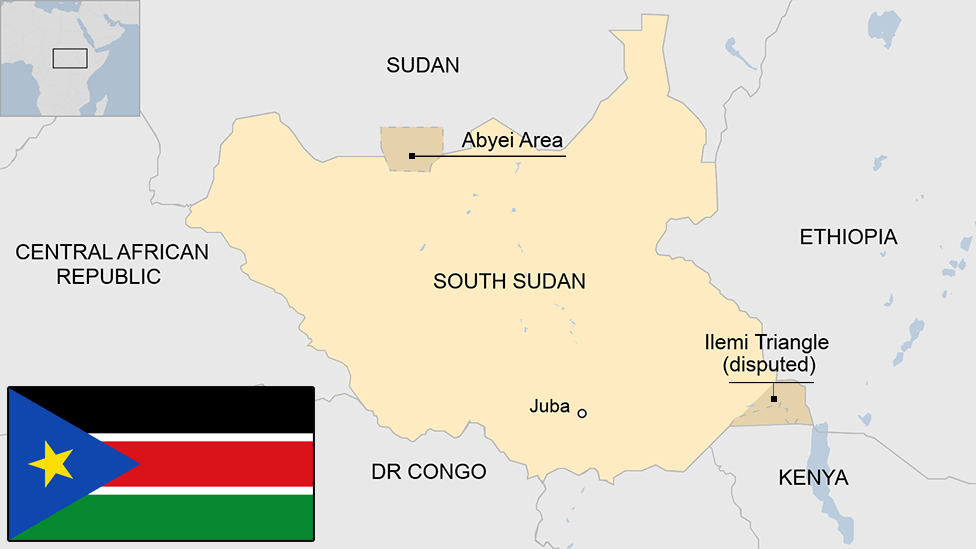“Exploring South Sudan’s Culture and History: A Country Profile”
Map of South Sudan
South Sudan gained independence from Sudan on July 9, 2011 as a result of a 2005 accord that ended Africa’s longest-running civil war.
Consisting of the 10 southernmost states of Sudan, South Sudan is one of the most diverse countries in Africa. It is home to over 60 different major ethnic groups.
Independence did not end the conflict in South Sudan. Civil war broke out in 2013 when the president fell out with his then-vice president, sparking a conflict that has displaced some four million people.
In August 2018, a power-sharing deal was signed between the warring parties to end the five-year civil war.
-
Capital city: Juba
-
Area: 644,329 km²
-
Population: 11.5 million
-
Languages: English, also Dinka, Nuer, Murle, Luo, Ma’di, Otuho, Zande and others
-
Life expectancy: 54 years (men) 57 years (women)
Chairman: Salva Kiir Mayardit
South Sudanese President Salva Kiir Mayardit
Salva Kiir Mayardit became President of South Sudan – then part of Sudan – and head of the Sudan People’s Liberation Movement (SPLM) in 2005, succeeding longtime rebel leader John Garang, who was killed in a helicopter crash.
Mr. Kiir was re-elected President in April 2010 in multiparty polls in the South. In July 2011, when South Sudan became independent, he became President of the new state.
Just two years later, however, the country was engulfed in civil war when Mr Kiir sacked his entire cabinet and accused Vice President Riek Machar of instigating a failed coup.
In August 2018, after five years of civil war, Mr Kiir signed a power-sharing agreement with rebel leader Machar and other opposition groups to end the brutal conflict.
Rebel leader Riek Machar briefly resumed his old job as first vice president in 2016
Constitutional guarantees of media freedom are not respected in practice, and journalists risk harassment and imprisonment for reporting unfavorable to the authorities.
Radio is the most popular medium. Private local stations, some with foreign funding, broadcast alongside the state national network.
Cattle are a source of wealth – and conflict – in South Sudan
Some important dates in the history of South Sudan:
1956 – Sudan becomes independent, but the southern states are dissatisfied with their lack of autonomy. Tensions escalate into fighting that lasts until 1972, when some degree of self-government is promised to the South.
1983 – Fighting restarts after the Sudanese government canceled the autonomy agreements.
2011 – South Sudan becomes an independent country after more than 20 years of guerrilla warfare that has claimed at least 1.5 million lives and displaced more than four million.
2012 – Disagreements with Sudan over the oil-rich Abyei region result in fighting known as the Heglig Crisis. A peace deal was reached in June 2012, which helped restart South Sudan’s oil exports and created a 10km demilitarized zone along the border.
2013 – Civil war erupts after President Salva Kiir sacks cabinet and accuses Vice President Riek Machar of plotting a failed coup d’état. Over 2.2 million people have been displaced by the fighting and severe famine is threatening the lives of thousands.
2018 – Renewed attempt to end civil war leads to power-sharing agreement between warring factions.
The United Nations intervened in the civil war that began shortly after independence
Don’t miss interesting posts on Famousbio
